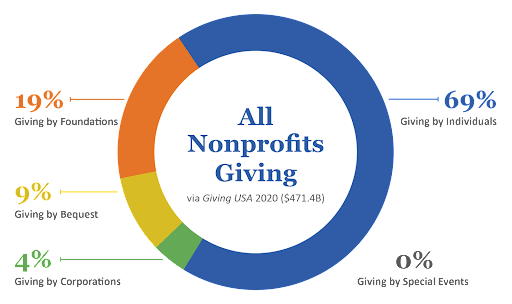Nonprofit Firm: Equipping Organizations to Drive Social Change
Nonprofit Firm: Equipping Organizations to Drive Social Change
Blog Article
Checking Out the Diverse Functions and Responsibilities of a Nonprofit Firm in Attending To Social Issues and Supporting Modification
Not-for-profit agencies serve as critical agents of change within society, dealing with a myriad of social concerns via multifaceted approaches. Their responsibilities expand beyond plain service stipulation; they involve in campaigning for, resource mobilization, and neighborhood outreach, usually acting as a bridge between vital services and marginalized populaces.
Comprehending Nonprofit Agency Functions
The effectiveness of nonprofit firms pivots on a clear understanding of their diverse functions within culture. Not-for-profit firms usually function as service providers, supplying essential programs and sources to underserved populations.
Additionally, nonprofits play a vital role in advocacy, increasing recognition and affecting plan choices that affect their areas. By taking part in research and public education, these organizations assist form public discourse and advertise notified decision-making - nonprofit agency. They likewise offer as systems for volunteerism, activating neighborhood participants to add their time and skills toward collective objectives
Furthermore, not-for-profit firms typically work as conveners, uniting diverse stakeholders to promote partnership and cumulative influence. This collaborative technique improves their ability to resolve complicated social problems efficiently. Comprehending these multifaceted roles is crucial for making best use of the potential of not-for-profit agencies in producing lasting social change and improving total area well-being.
Community Interaction and Outreach
Effective neighborhood interaction and outreach are fundamental elements of nonprofit companies' methods to promote links and build count on within the areas they serve. These efforts concentrate on recognizing area demands, promoting recognition of offered sources, and motivating involvement in programs designed to deal with social problems. Nonprofit companies employ a selection of methods to involve with community members, such as workshops, educational sessions, and collective events.
Outreach campaigns offer to reinforce partnerships with varied populations, particularly marginalized teams who might encounter obstacles to access. By using culturally pertinent interaction approaches and leveraging regional partnerships, nonprofits can boost their visibility and demonstrate their commitment to neighborhood empowerment. This method not just cultivates a feeling of belonging but also increases the chance of continual engagement.
Furthermore, efficient neighborhood engagement surpasses plain engagement; it includes proactively paying attention to community members' responses and including their understandings right into program growth. This collaborative procedure makes sure that the solutions offered are receptive, relevant, and tailored to the unique obstacles faced by the neighborhood. Inevitably, cultivating strong links via engagement and outreach can lead to even more impactful interventions and a better cumulative effort towards promoting favorable social modification.
Advocacy and Plan Impact
Advocacy works as an important device for nonprofit agencies to affect public plan and drive systemic adjustment. By leveraging their knowledge and neighborhood understandings, these companies can effectively represent marginalized populaces and address pushing social concerns. Nonprofits engage in advocacy via various methods, consisting of public awareness projects, grassroots mobilization, union structure, and direct lobbying of policymakers.
With these efforts, nonprofit firms intend to form regulation and policy structures that line up with their mission and the needs of the areas they serve. They perform research study, gather information, and share engaging narratives to highlight the urgency of certain problems, ensuring that decision-makers are educated and inspired to act. This process not just intensifies the voices of those impacted by social injustices but likewise promotes a more fair and comprehensive policymaking setting.
In addition, advocacy initiatives usually seek to develop long-lasting architectural modifications, attending to origin creates as view it now opposed to merely alleviating symptoms. By prioritizing plan impact, nonprofit companies add to a wider understanding of social difficulties and promote remedies that can result in sustainable enhancements in social wellness. Ultimately, campaigning for is fundamental to the transformative role nonprofits play in developing a simply and equitable culture.
Fundraising and Source Administration
Nonprofit companies count on robust fundraising and resource administration methods to sustain their campaigning for efforts and maintain their goals. By utilizing a multi-faceted strategy, nonprofits can mitigate the dangers associated with dependence on a solitary funding resource.
Source monitoring is just as critical, as it entails the calculated allotment of both human and financial sources to take full advantage of impact. Nonprofits should create spending plans he has a good point that align with their goals while ensuring transparency and accountability to stakeholders. This includes regular tracking of expenses and changing strategies as needed to optimize resource usage.

Collaboration and Collaborations
While lots of organizations pursue their goals separately, partnership and collaborations can considerably enhance the performance of nonprofit agencies. By working together with other nonprofits, federal government entities, and economic sector organizations, nonprofits can merge sources, share know-how, and intensify their effect on social concerns. Collaborative efforts commonly result in cutting-edge solutions that may not be achievable individually, leveraging the strengths of each companion to resolve complicated difficulties.

Inevitably, effective cooperation requires clear interaction, shared goals, and shared regard amongst partners. By welcoming a participating approach, not-for-profit firms can produce sustainable networks that not just address immediate social issues however likewise add to long-term systemic change, fostering a more fair society. Through collaboration, nonprofits can flourish and optimize their potential for meaningful influence.
Verdict
Not-for-profit agencies serve as vital entities in resolving social issues and promoting adjustment within communities. Ultimately, the multifaceted duties of nonprofit companies dramatically contribute to the search of social justice and the renovation of area wellness.
Understanding these diverse duties is critical for taking full advantage of the potential of nonprofit agencies in creating sustainable social change and improving total community health.
Efficient neighborhood involvement and outreach are essential elements of not-for-profit firms' strategies to construct and foster connections depend on within the communities they serve. By working with each other with various other nonprofits, government entities, and exclusive market companies, nonprofits can merge resources, share experience, and intensify their influence on social issues.Not-for-profit companies offer as critical entities in promoting and attending to social problems modification within neighborhoods - nonprofit agency. Inevitably, the diverse duties of not-for-profit companies dramatically add to the search of social justice and the improvement of area well-being
Report this page